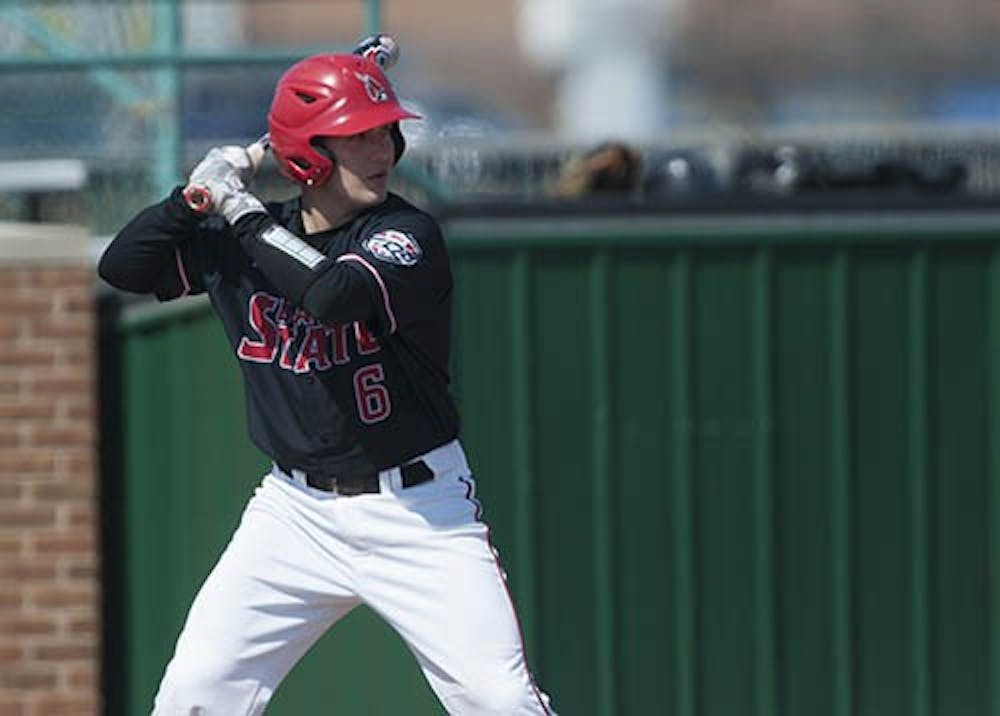After taking just 16 at bats in the 2012 season, infielder Kevin Schlotter suddenly lost his coach and was asked to learn a new position — catcher.
He had to compete with three others catchers who have been playing the position for years.
After spending his seasons as a utility player in the infield, Schlotter and the Ball State coaching staff decided during the offseason it was best to make him a permanent catcher. Part of it was out of necessity because all of the Cardinals catchers from last season were leaving, creating a gaping hole on one of the most cerebral positions in baseball.
The transition for Schlotter hasn’t been easy.
“There are a lot of things you have to do with your arm slot, how to get the ball out in time,” Schlotter said. “It’s been a tough grind, we’ve really been working our butts off and pouring a lot of sweat on the field out there.”
Despite the difficulties associated with becoming a permanent fixture at the catcher position, Ball State coach Rich Maloney and assistant Dustin Glant love what they’ve seen from him so far. Schlotter has already seen time 15 of Ball State’s 21 games, including starting eight of them. He and freshman Sam Tidaback share the position.
Glant has been impressed with the fourth-year junior’s dedication to master the catcher’s position.
“He didn’t have much catching experience, so we had to work on the fundamentals day in and day out,” Glant said. “We were at it again on Sunday, just working the same fundamentals we have since we started.”
For Schlotter, those fundamentals include improving his arm strength. Catchers have to be able to reach all three bases at any time in order to throw out runners. Being a split second too slow can be the difference between a win and a loss.
Schlotter believes the most difficult part of the transition has been the increased volume of throws he has to deal out every day. He mentioned that the wear and tear on his arm has been greater since he made the switch, but it’s nothing he can’t handle.
“There’s never a time when you can just flip the ball over to a base,” Schlotter said. “Building up the arm strength to deal with the beating my arm takes has been really difficult.”
Schlotter said although the challenge has been difficult, his coaches and pitchers he’s worked with have been supportive and always given him the help he’s needed to succeed.
Pitchers and catchers have to execute quickly during games, and a lot of pitchers prefer to have specific catchers start when he knows he’ll be taking the mound.
The battery relays signs back and forth that represent pitches, with the catcher selecting pitches and locations for those pitches he thinks will lead to the best chance of success. The pitcher can wave off the signals until he gets one he likes, showing that the battery needs good chemistry to function efficiently.
For Schlotter, chemistry hasn’t been an issue.
“I love all the guys on this team, and it makes it easier when the guys are throwing strikes and starters are always a pleasure to catch,” Schlotter said. “But I really like Scott Baker, Chris Marangon and Jon Cisna; they’ve been a pleasure to catch.”
Standing at just 5-foot-9 and 165 pounds, Schlotter isn’t the tallest or biggest player on the team by any means. By comparison, the other three catchers on the team stand at a minimum of 6 feet, and the lightest one of those three is 190 pounds.
Despite the physical limitations, Maloney is proud of what Schlotter has overcome this season, and he has become a productive player for Ball State.
“Here’s a guy who walked on, didn’t have the greatest arm, not the fastest speed, but you know what he does have?” Maloney said, tapping his heart.“ And a hell of a lot of it.”


